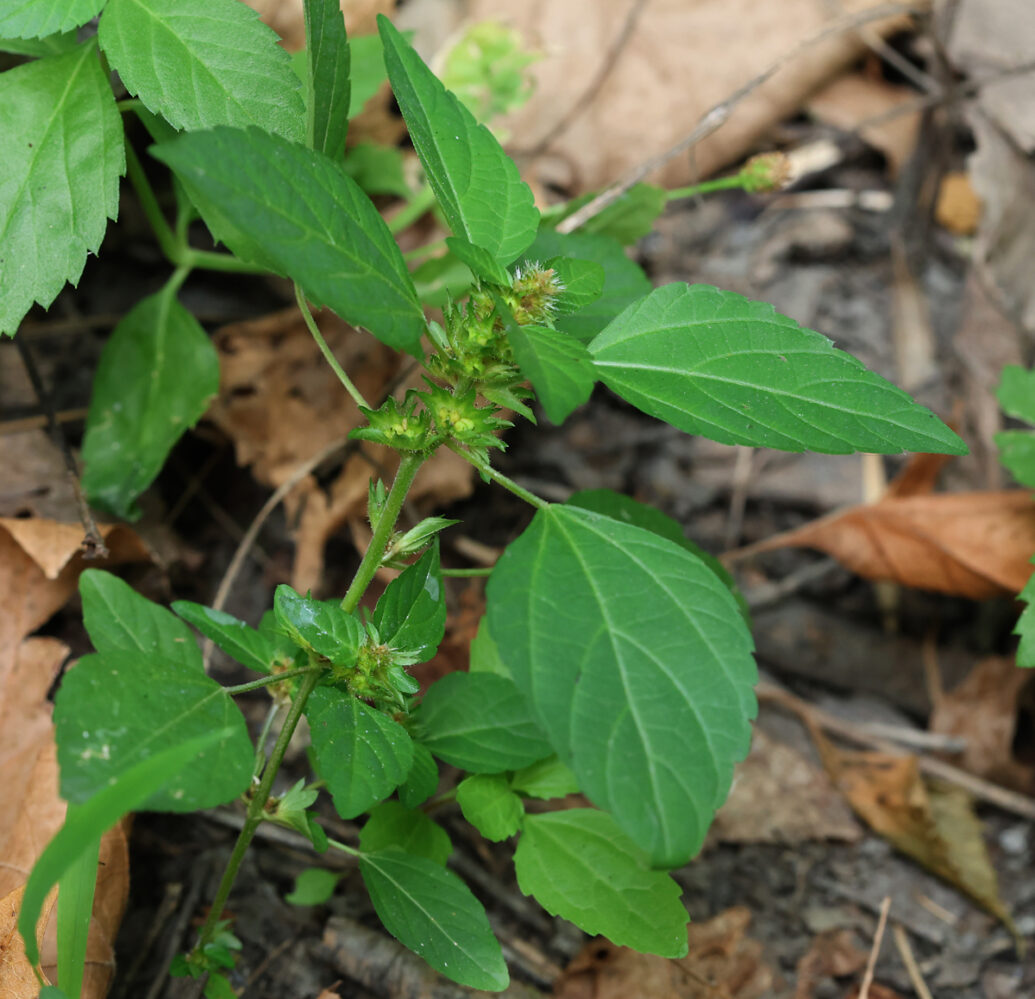
THREE-SEEDED MERCURY
Acalypha rhomboidea
SPURGE FAMILY (Euphorbiaceae)
 Identification
Identification
- Flowering time - July to October
- Uncommon at FF & NW
- Inconspicuous green plant and flowers
- Toothed bracts in leaf axils
- Broad leaves with toothed margins unlike Pennsylvania Pellitory
This inconspicuous native, weedy annual has erect stems from 6-24 inches tall. Alternate, lance to oval-shaped leaves with shallow, bluntly toothed margins are on long narrow stalks (A,B). Leaves are more numerous with less space between them on the upper plant near the tip. Green, saucer-shaped bracts with 5-9 long, pointed lobes occur at the junction of the leaf and stem (C). Inconspicuous female and short-stalked male flowers which have no petals are located in the center of the bract (D) where a rounded three-lobed fruit develops (E).
Prefers moist disturbed areas in a variety of habitats from woodlands to gardens and roadsides. Look for it at Fontenelle Forest and Neale Woods along moist woodland trails, particularly in ravines and the floodplain. It has not been seen very often by the author, but I suspect this inconspicuous plant has often been overlooked. Look for it in late summer and fall.
The name, Mercury, originates from the appearance of the bracts thought to resemble the sandals of the Roman god Mercury.
An alternate common name is Copperleaf.
Although the plants are not closely related botanically, Three-seeded Mercury (Spurge Family) looks very much like Nettle Family member Pennsylvania Pellitory (Parietaria pensylvanica). Both are inconspicuous little green plants with barely visible greenish flowers having no true petals. Leaf shape is the best identifier. Three-seeded Mercury leaves are broader, oval to elliptical in shape, tapering quickly to a pointed tip; their margins have shallow, blunt teeth. Pennsylvania Pellitory leaves have smooth margins with no teeth and are narrower with a longer tapered blunt tip.




